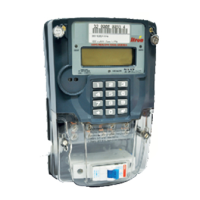3
Introduction to Prepayment
Prepayment electricity meters enable supply authorities to collect revenue from consumers more efficiently.
Consumers are obliged to pay for their electricity prior to actual consumption.
This means that if a prepayment meter is installed in the house, the meter would monitor electricity
consumption and compare that to the available credit purchased by the consumer. If the consumer would
exceed this credit limit, the power will be disconnected.
Credit can be added by entering a valid credit token. The credit token must be purchased from the supply
authority or an approved vendor. When a consumer buys electricity from a vendor, the consumer will receive
a receipt with a 20-digit code/token. This token must be entered into the meter in order to credit the
equivalent kWh on the meter.
For Example: A consumer goes to the local grocery store (vendor) to buy electricity. The consumer will
supply the vendor with a meter ID card (or meter serial number) and the amount that he/she wishes to
purchase. The vendor will in return supply the consumer with a receipt with a 20-digit token printed on it.
The consumer will enter this token into his/her meter in the house, and the equivalent amount in kWh will be
credited to the meter. The display of the meter will indicate the amount of credit available in kWh.
1kWh = burning of 100W globe for 10 hours
Vendors from different areas make use of different rates or tariff indexes. This means that each area has a
specific rate at which electricity is charged.
All tokens are meter serial number specific, which means that a token can only be used on one specific
meter. If a consumer buys electricity from a vendor and would for some reason lose the token, no one would
be able to use the token (on a different meter) unless it is entered into the initial buyer’s meter.

